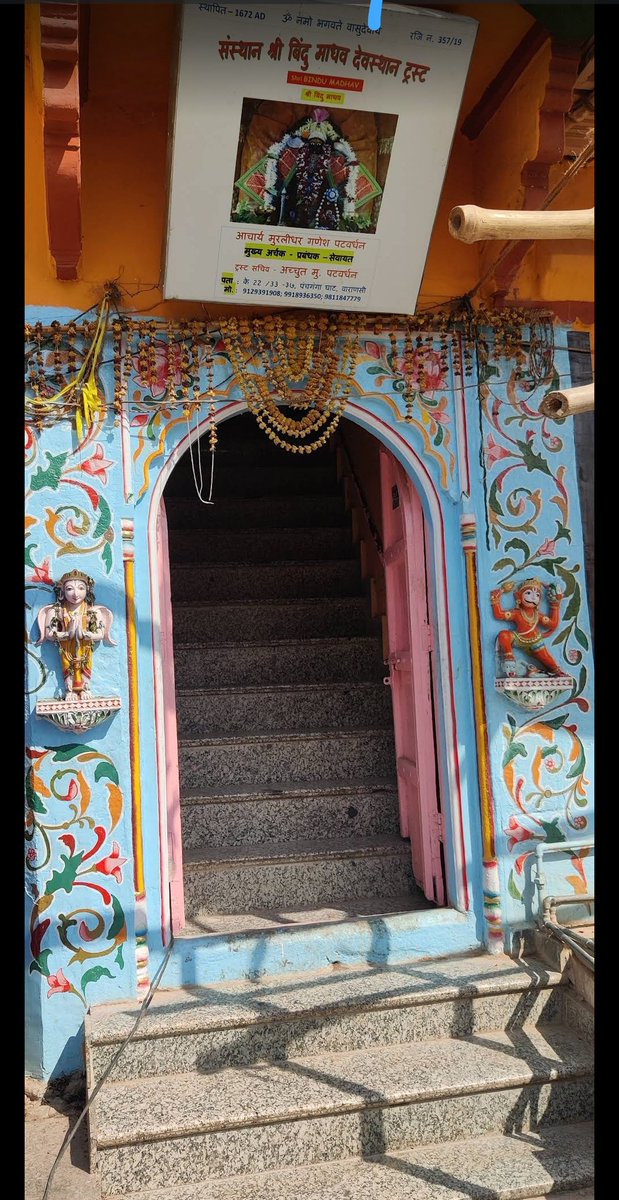Alamgir Mosque, built by pulling down one of the most sacred Vishnu temples of Kashi i.e. Bindu Madhav temple. The temple was built by Rajput Maharaja Man Singh of Amer. The temple was so grand as described by French traveller Tavernier that the idol was 5-6 feet high and was 

garlanded with Gold, Rubies, Pearls and Emeralds. It was the most impressive sight on Banaras riverfront with four great towers on four of its corner and a lofty Shikhar rising over the sanctum. Tulsi das in whose age this temple was built praised it in many of his poems.
The temple was destroyed by Aurangzeb just years after Tavernier saw it and to match the grandeur of the former temple, he built this lofty mosque over the site. In words of later colonial writers, the Alamgir's mosque completely dominated this otherwise Hindu city.
But the lofty towers built to match the grandeur of the temple couldn't live long, due to safety issue, the British cut both minaret in half, and even later one of the minaret still fell, then the other one was further truncated, which gives it today's look. Meanwhile 

the Bindu Madhav temple was shifted to a nearby small and inconspicuous house in the shadows of this mosque where the lord is still worshipped. 



• • •
Missing some Tweet in this thread? You can try to
force a refresh

 Read on Twitter
Read on Twitter

















